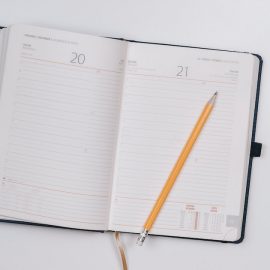

This article is an excerpt from the Shortform book guide to "The Fine Art of Small Talk" by Debra Fine. Shortform has the world's best summaries and analyses of books you should be reading.
Like this article? Sign up for a free trial here .
Why is it better to speak assertively rather than passively or aggressively? How can you change your tone to be more assertive?
In her book The Fine Art of Small Talk, author Debra Fine recommends using an assertive tone when you speak. An assertive tone will make you appear more reliable, competent, and confident.
Here’s how and why you should be speaking assertively, according to communication specialist Debra Fine.
How to Speak Assertively
Let’s explore how Fine recommends you speak: not passively, but assertively. According to Fine, the words and phrasing you use communicate a lot about your self-image. She argues that when you use passive language, you imply that you’re unreliable, subservient, or incompetent.
Consider the following dialogue between April and her coworker, Jeff:
- April: Hi Jeff, can I ask you a question? I wanted to ask if you’ll have those client reports for me soon.
- Jeff: I’ll have to check with my boss, but I’ll try and get them to you this week.
There are a number of issues here. First, there’s no need for April to ask if she can ask a question; she comes across as if she’s bowing and scraping. When she does ask her question, it’s vague, and it doesn’t specify the urgency of her need.
Jeff, meanwhile, by using the phrase “have to,” implies that April’s request is an imposition that forces him to take on an additional burden. When he says he’ll “try,” he gives the impression that he’s uncertain about his ability to fulfill her request in the timeframe he specifies, and implies that he’s making room for himself to wriggle out of the commitment.
Meanwhile, Fine argues that speaking assertively gives the impression that you know what you want and need. It also commands attention.
Consider the following dialogue, in which both parties are direct and assertive:
- April: Hi Jeff, I need those client reports by next weekend. Can I expect them by the end of the week?
- Jeff: I’ll get in touch with my boss and make sure you have them by Friday.
Here, April clearly communicates her need and the timeframe she’s expecting. She gets straight to the point. Jeff, too, is clear about his plan of action, letting April know what he’s doing and when she can expect her request to be fulfilled. Both parties come across as confident professionals who are sure of their needs and capabilities.
| Aggressive, Passive, or Assertive? While Fine discusses the need to be assertive, she doesn’t cover why people may be reluctant to do so. Often, people who avoid assertive language and act passively instead do so because they worry it makes them look aggressive—but that’s a misunderstanding. You can be assertive without being aggressive. Psychologists tell us that the difference between being aggressive, passive, or assertive is a matter of who you put first and how you communicate your needs. An aggressive person puts himself first. He demands and enforces the fulfillment of his own needs and desires, often at the cost of the needs, desires, and boundaries of others. In many cases, an aggressive person uses threats, disrespect, or verbal abuse to get his way. He wants his client reports now, and he doesn’t care whose day he ruins to get them. In direct contrast, a passive person puts everyone else first. He allows the needs and desires of others to supersede his own and doesn’t act to protect his boundaries. As a result, he often “ends up” in situations where he’s uncomfortable, unhappy, or unsatisfied. As Fine notes, passive people don’t make a strong impression; they belittle their own views, skills, and knowledge, seek the approval of others, and are constantly apologetic. A passive person would rather give up control over when he gets his client reports than step on anyone’s toes. Assertiveness is the middle ground between passiveness and aggressiveness. An assertive person is respectful of both her own needs and those of the other party. She communicates her needs clearly, in whatever way is most effective; she doesn’t scream when it’s inappropriate and doesn’t bow when it’s unnecessary. She sets her own boundaries and defends them without violating the boundaries of others. In short, if she needs those client reports by Tuesday, she says so. If there’s a problem preventing that, she’ll adjust—but everyone involved knows what her needs, goals, and expectations are. |

———End of Preview———
Like what you just read? Read the rest of the world's best book summary and analysis of Debra Fine's "The Fine Art of Small Talk" at Shortform .
Here's what you'll find in our full The Fine Art of Small Talk summary :
- Why we need small talk and why we shouldn't avoid it
- How to appear confident and engaging in any context
- How to break the ice with strangers and keep the conversation going






